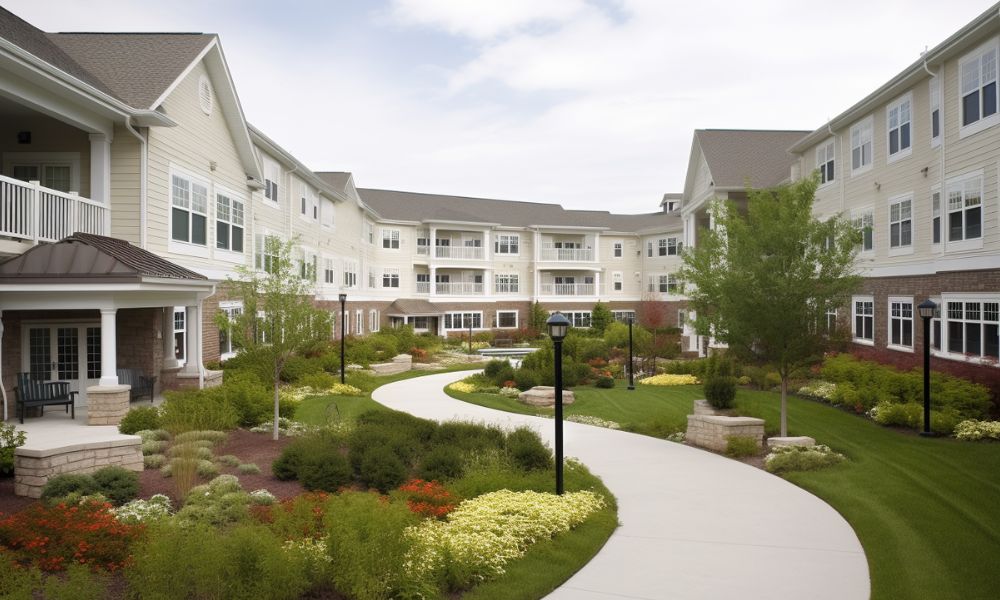Modern Two-Bedroom Senior Living with Smart Tech and Upscale Amenities in the United States 2025: An Informational Overview
Explore how modern two‑bedroom senior housing in the United States blends contemporary design, smart‑home features, and upscale amenities to promote comfort, independence, and active lifestyles. This overview highlights 2025 trends in layout, technology, and community offerings for older adults.

Contemporary Design and Spacious Floor Plans for Active Seniors
Modern two-bedroom senior residences in the United States typically range between 1,000 and 1,500 square feet. These homes prioritize open floor plans flooded with natural light, blending style with functionality. Key design highlights include:
- Split bedroom layouts to enhance privacy.
- Spacious master suites featuring walk-in closets.
- Full-size, designer kitchens with islands to facilitate cooking and entertaining.
- Flexible living spaces that support hobbies, socializing, and daily activities.
- Covered patios or balconies encouraging outdoor relaxation.
- Universal design elements such as zero-threshold entries and easy-to-navigate interiors, ensuring accessibility without an institutional feel.
This approach results in residences that meet modern aesthetic expectations while accommodating the physical requirements of aging adults. The emphasis is on creating an environment that feels both comfortable and elegant, supporting independent, active living.
Integration of Smart Home Technology for Safety and Convenience
Innovation in smart home technology greatly enhances the quality of life for seniors in 2025. Common smart features found in two-bedroom senior housing include:
- Voice-activated controls for lighting, temperature, and entertainment systems.
- Automated lighting that adjusts according to time of day or presence detection.
- Emergency response systems that offer rapid assistance, increasing peace of mind.
- Remote monitoring capabilities that allow families or caregivers to check in without intruding.
The integration of these technologies helps residents maintain autonomy and safety, offering ease of living while fostering confidence in daily routines. This seamless blend of tech and home design underscores how active adults can benefit from connected living environments.
Upscale Resort-Style Amenities Supporting Vibrant Lifestyles
Senior communities typically enhance the resident experience by providing a diverse array of amenities designed to promote physical wellness, social engagement, and mental stimulation. Popular features include:
- Wellness centers and fully equipped fitness facilities.
- Chef-prepared dining options celebrating nutrition and local flavors.
- Cultural, educational, and lifelong learning programs.
- Landscaped walking paths and outdoor recreational areas.
- Community gardens, game rooms, libraries, theaters, and arts and crafts studios.
- Scheduled transportation services simplifying access to medical care, shopping, and outings.
These amenities encourage an active, socially connected lifestyle, helping seniors stay engaged, healthy, and fulfilled within their community.
Examples of Modern Senior Living Communities in the United States
While many senior housing communities across the United States embrace these modern standards, notable examples illustrate the variety and quality available:
-
Resort-style coastal living: Communities like those in Florida offer tropical-inspired landscaping, lagoon views, and outdoor bar areas designed to create a vacation-like ambiance, encouraging relaxation and social interaction in warm climates.
-
High-tech urban environments: Communities in regions like Silicon Valley feature residences with high-end finishes—stainless steel appliances, upgraded cabinetry, and elegant flooring—complemented by wellness centers, massage therapy, salons, and cultural venues close to premier medical centers.
-
Personalized care and flexible living options: Certain communities provide 24/7 onsite nursing care, specialized memory care support, and short-term stay options in fully furnished apartments. These offerings cater to changing needs while maintaining independence and dignity.
Social Connectivity and Community Engagement
Modern two-bedroom senior living communities value social wellness as much as physical comfort. Thoughtfully designed common areas facilitate interpersonal connection:
- Game rooms and libraries foster shared hobbies and leisurely activities.
- Movie theaters and arts studios provide entertainment and creative outlets.
- Outdoor entertainment areas and garden spaces offer inviting venues for gatherings.
Such environments combat isolation, promote friendship, and contribute positively to emotional wellbeing, which are essential components of healthy senior living.
Financial Considerations and Market Overview
Senior housing with advanced features and upscale amenities often presents a luxury living experience. While specific costs differ widely depending on location, community, and services, it is advised that consumers research thoroughly and consult multiple sources to understand market options.
Planning should factor in expenses related not just to housing but also to amenities, healthcare support, and technology integration. Being informed enables seniors and their families to make decisions that balance quality of life with financial sustainability.
In summary, modern two-bedroom senior living communities in the United States in 2025 offer an appealing combination of spacious, stylish homes integrated with smart technologies and resort-quality amenities. These options cater to active adults seeking independence, social engagement, and lifelong wellness in comfortable, accessible settings.
Sources
- Heritage Waterside Retirement Communities. https://heritagewaterside.com/retirement-communities/
- The Watermark at San Jose Senior Living Community. https://www.watermarkcommunities.com/our-communities/california/san-jose/the-watermark-at-san-jose/
- Wide Voices – New Senior Housing That’s Simply Stunning. (No direct URL provided)
Disclaimer: Information regarding pricing, availability, or community services is subject to change and may vary based on location, dealer, and current market conditions. Prospective residents should verify details with local providers and conduct independent research to obtain accurate, up-to-date information.




